In pictures: Bolivia's colourful Andean mansions
- Published
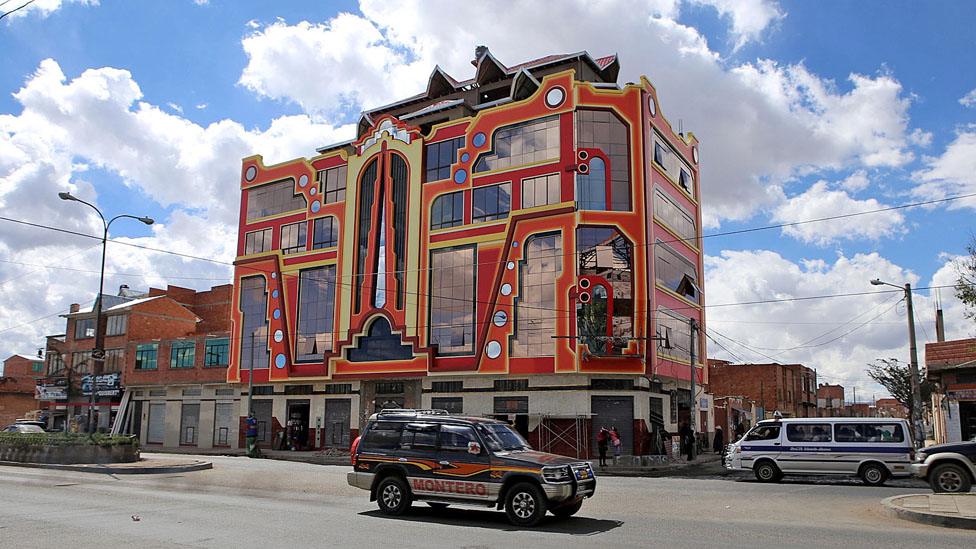
High on the Bolivian plateau in the city of El Alto, a new architectural phenomenon is becoming quite the rage.
In a city with mainly unpainted brick houses, many of them unfinished, architect Freddy Mamani's brightly coloured ostentatious mansions are leaving a very colourful mark in the otherwise dull cityscape.
They are dubbed cholets, a mixture of the word chalet (large house) and chola (indigenous woman).
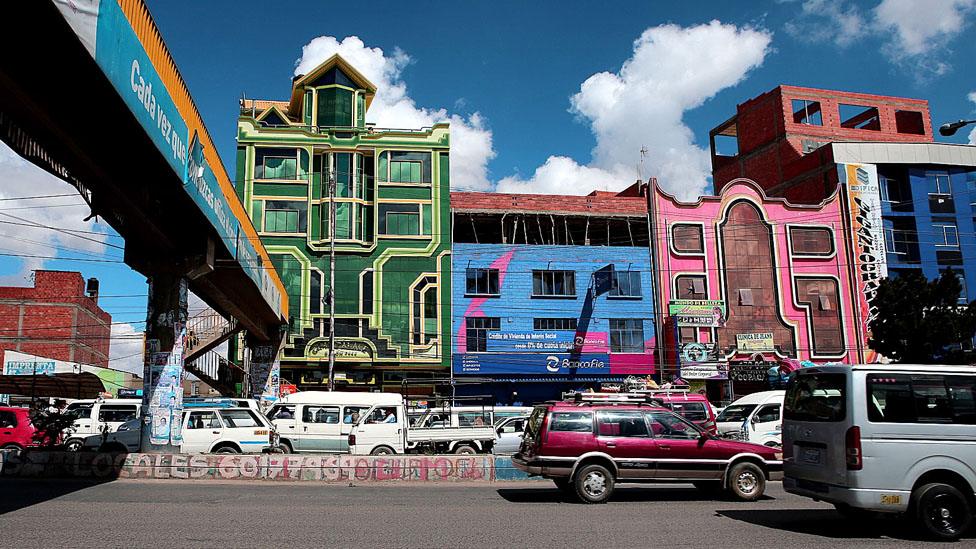
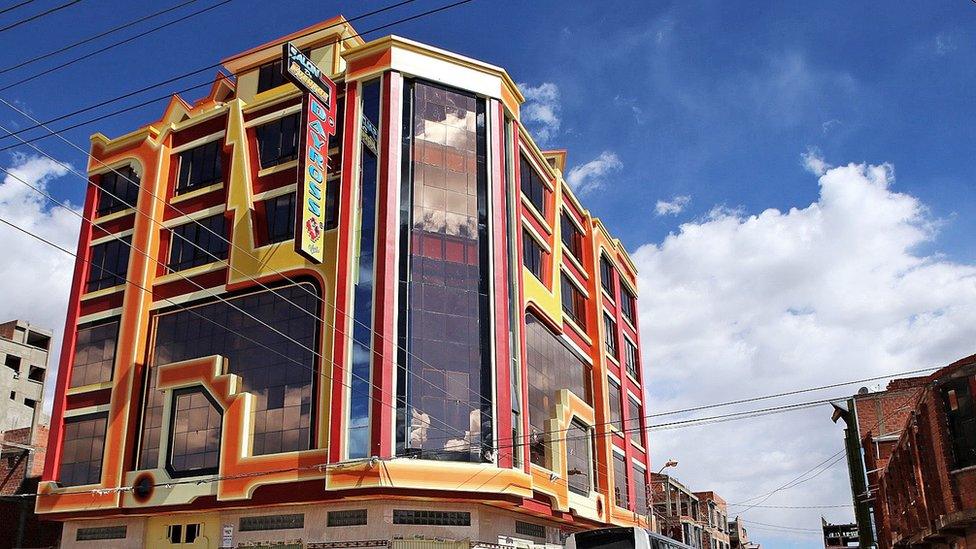
"El Alto is characterised by its cold climate for its topography with mountains, it's dry. With the colour we add more life to the streets of El Alto," says Mr Mamani, a local architect whose creations can now be seen not only in El Alto but across Bolivia and other South American countries like Peru and Brazil.
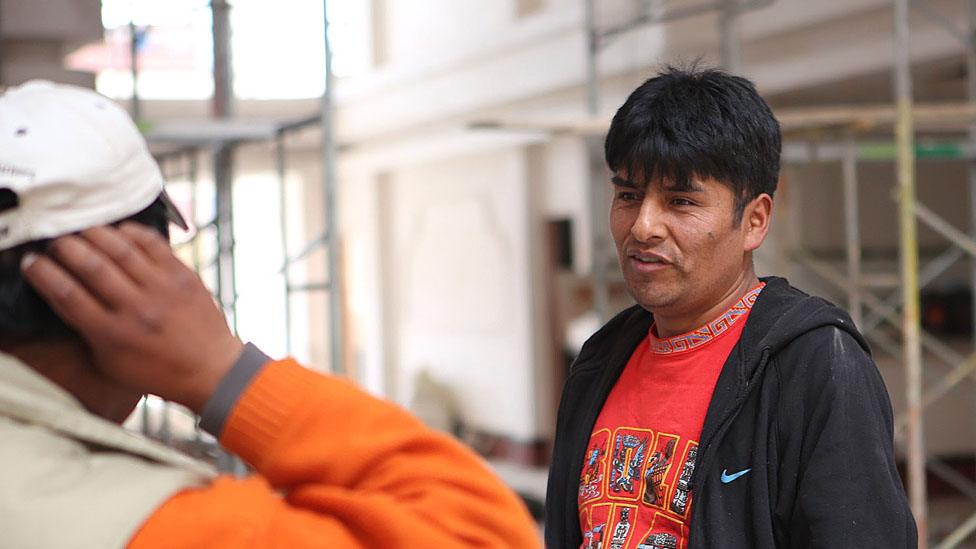
He has constructed 70 of these mansions in El Alto alone and continues to get more orders every day.
Mr Mamani is inspired by indigenous Andean iconography.
Not far away from El Alto, on the shores of the Lake Titicaca, lie the ruins of Tiwanaku, the capital of a pre-Incan civilisation.
The geometric patterns he incorporates into his buildings resemble those found in Tiwanaku's structures, he says.
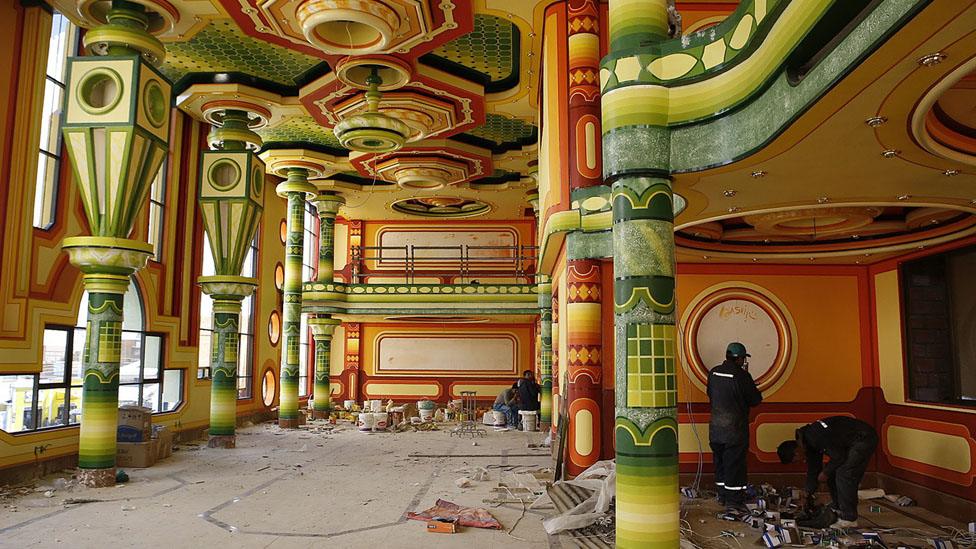
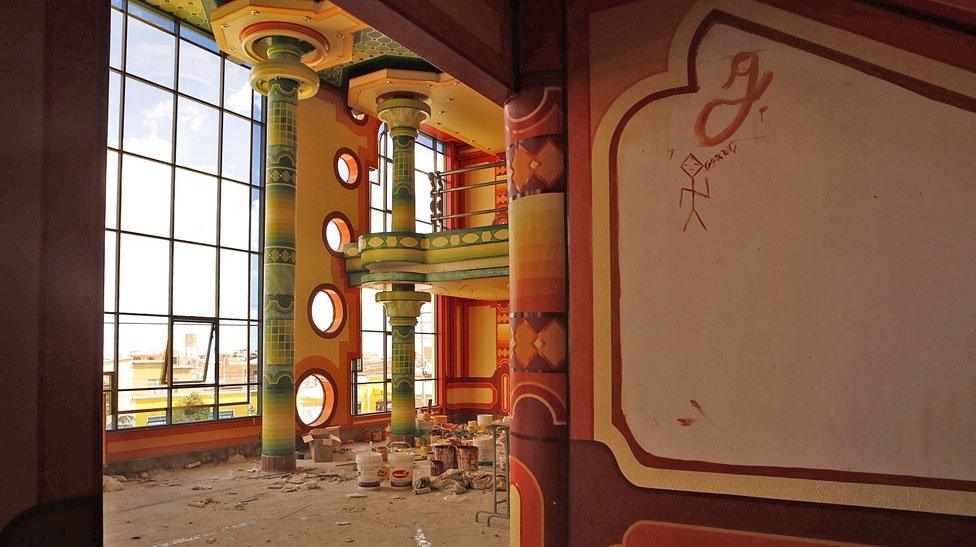
It is a celebration of the traditional culture of the indigenous people of Bolivia.
For a new class of rich Aymara indigenous people in El Alto, these mansions have become quite the status symbol.
And they are willing to fork out anywhere between $150,000 (£100,000) to $300,000 for one of these glitzy buildings.
There are penthouses on the upper floors and space for shops on the ground floor.
And if you want to throw a party, there is a party hall in between, sometimes even two.

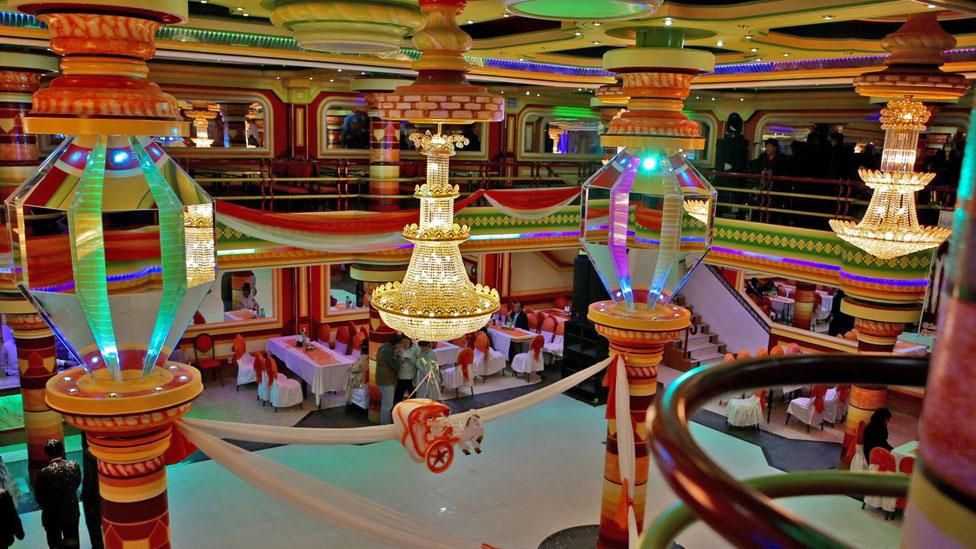
And the owners of these colourful mansions can rake in a tidy sum by renting out these spaces.
It is in the party room where many from the Aymara community celebrate weddings.
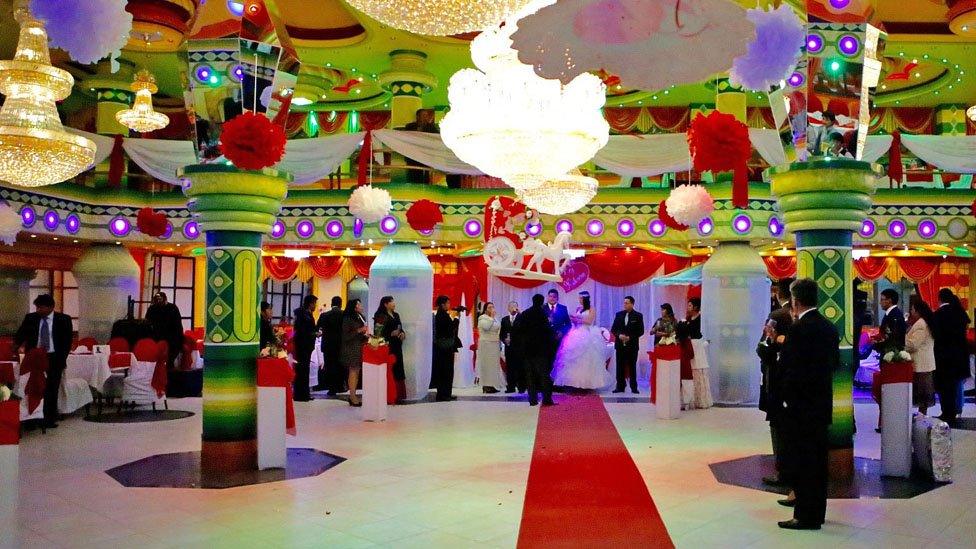
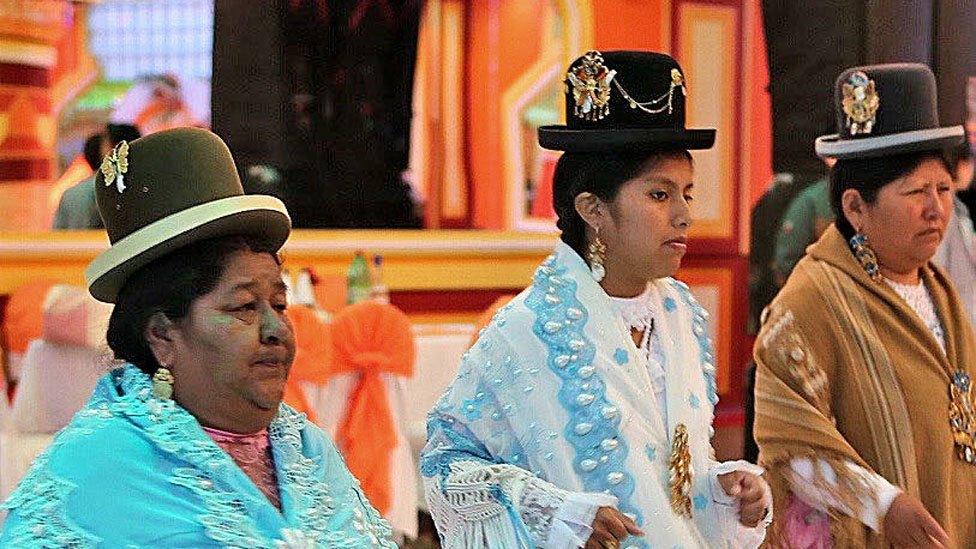
Inside, the colours are just as intense as outside and the chandeliers dazzle.
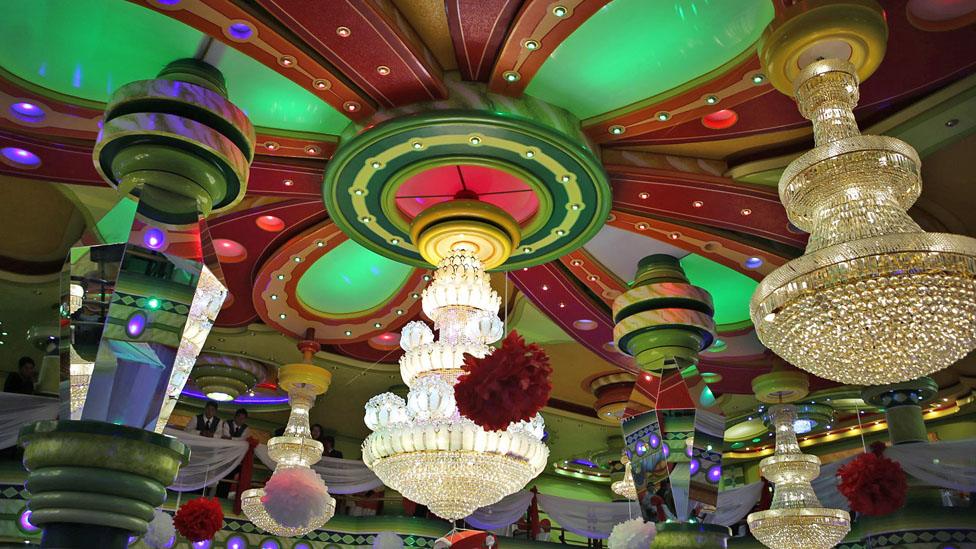
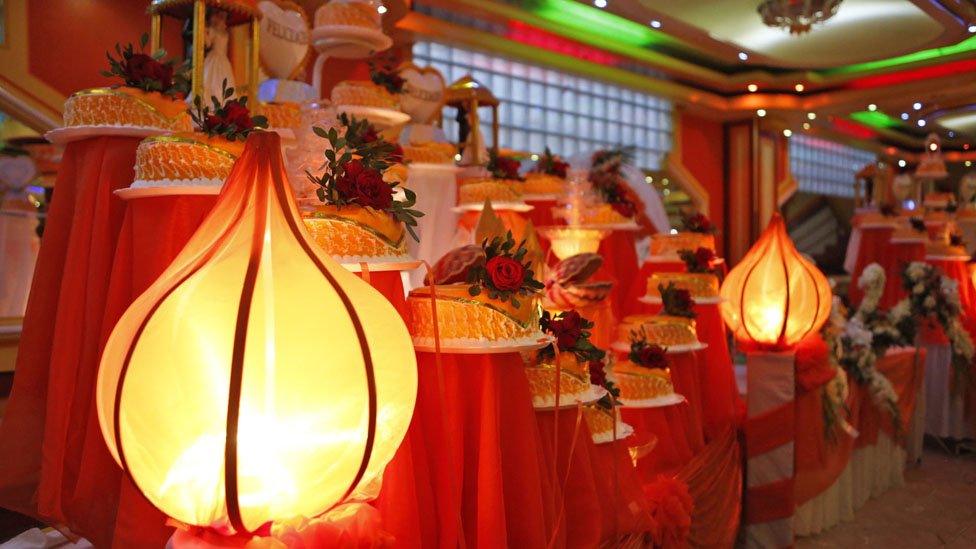
Mr Mamani's work has inspired many copycats.
On a drive with him around El Alto, he pointed some of these copies out to me. Some of these other architects and builders used to work for him, says Mamani.

A "copycat" cholet is sandwiched between two originals
What separates his work from theirs?
According to Mr Mamani, a lot of works are similar but "they don't have a language, you could say".
"Mine for example, they have an essence that can be described, it has its own language, its own identity."